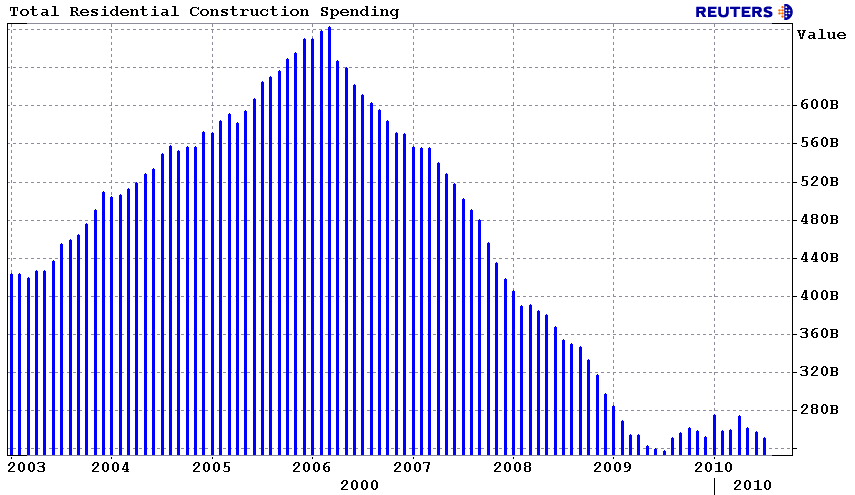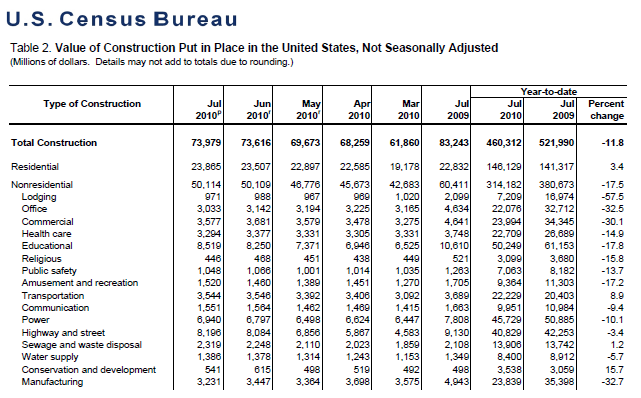The Census Bureau today released Construction Spending data for July 2010.
Residential construction spending includes remodeling, additions, and major replacements to owner occupied properties subsequent to completion of original building. It includes construction of additional housing units in existing residential structures, finishing of basements and attics, modernization of kitchens, bathrooms, etc. Also included are improvements outside of residential structures, such as the addition of swimming pools and garages, and replacement of major equipment items such as water heaters, furnaces and central air-conditioners. Maintenance and repair work is not included.
The value of all construction put in place in the U.S. on an annualized basis was $805.2 billion compared to a rate of $813.1 billion in June. One year earlier the pace of construction was $901.2 billion, a year-over-year decline of 10.7 percent.
The residential portion of that construction spending in July was $250.52 billion compared to $256.90 billion in June, the third consecutive monthly decline in residential outlays. Still while the pace of total construction spending is off 10.7 percent from one year ago, residential spending is up 6.0 percent.

While the pace of construction for the year has slowed, the non-adjusted monthly residential figures are a little more encouraging. The residential sector accounted for $23.97 billion in construction value in July compared to $23.51 billion in June and $22.83 billion one year earlier, a 3.4 percent increase.

Nearly half of the $45.42 billion spent in private sector construction in July was residential, a total of $22.95 billion. This is a larger share of the private sector pie than one year ago when all private sector construction in July totaled $51.61 billion, only $22.06 billion of it residential. Thus far in 2010 private construction has totaled $295.5 billion, a 14.6 percent decline from last July while total residential spending is $140.77 billion, up 2.8 percent.
Public construction spending on a seasonally adjusted, annualized basis was 298.8 billion in July compared to $302.44 billion in June and $324.55 billion one year earlier, a decrease of 7.9 percent. Once again, even though public sector spending is down from one year ago, the current residential share is running much higher; one year ago the annual rate was $8.72 billion, in June it was $10.23 billion and in July $10.27 billion, a 17.8 percent increase over last year. On a monthly basis, public sector residential spending looks even better. While the $912 million in expenditures in July was down from $936 million in June, each of the three previous months had come in at least $100 million lower. This year to date $5.36 billion in public residential construction has been put in place, a 21.2 percent increase over figures in July 2009







